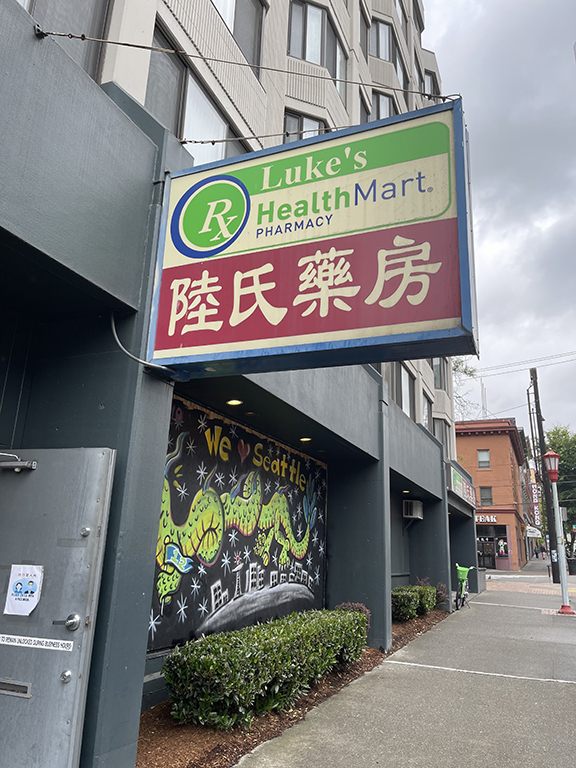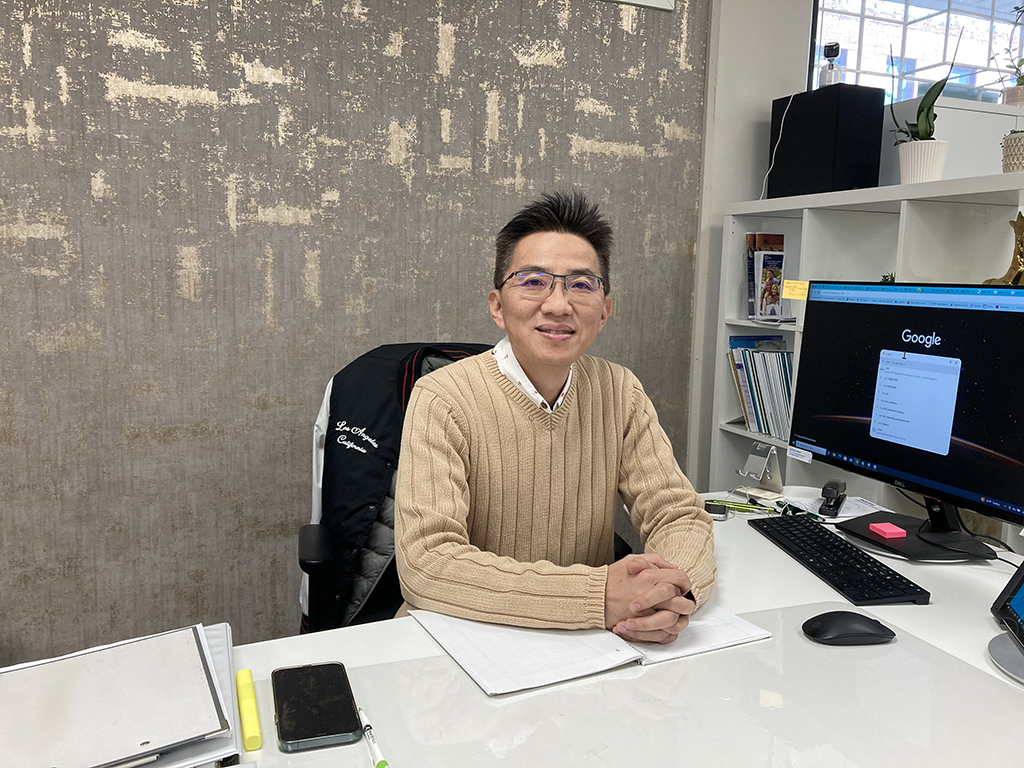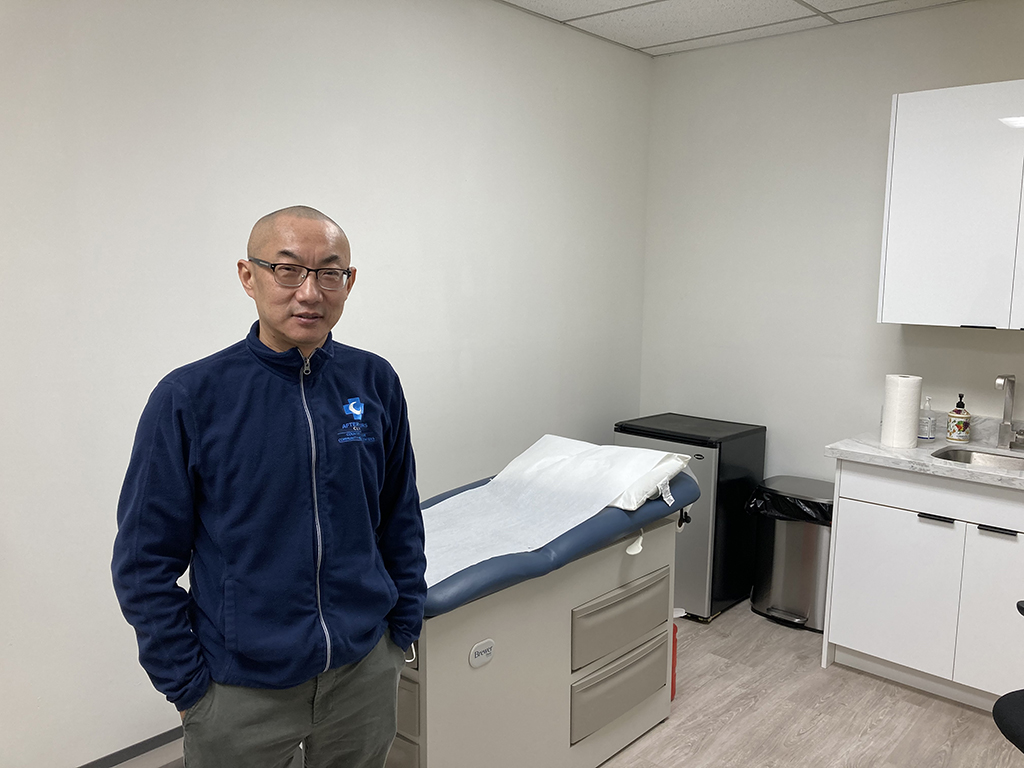By Mahlon Meyer
NORTHWEST ASIAN WEEKLY
On the day Luke’s Pharmacy—the last independent pharmacy in the Chinatown-International District (CID)—closed its doors, several customers stood outside the door crying.
 It was not just for the loss of their prescriptions, or the nurse practitioner, or other staff members who would help them navigate the complexities of a health care system widely acknowledged to be broken, much less in a different language.
It was not just for the loss of their prescriptions, or the nurse practitioner, or other staff members who would help them navigate the complexities of a health care system widely acknowledged to be broken, much less in a different language.
“There were rumors that something had happened to us,” the pharmacy manager told the Asian Weekly in an interview, asking us to refer to him by his surname, Chan, out of consideration for his position in the community. “Some people thought we had had a heart attack or something bad had happened.”
What had actually happened, in May, was the pharmacy, losing money on nearly every sale of drugs, was forced to go into discussions with Walgreens, in order to keep its patients’ medical records intact—and eventually to be acquired by the chain.
But as part of that process, Chan and his colleagues were not allowed to divulge any details.
“The community had no advance warning of when we closed our doors,” said Chan. “I felt like I had lost a part of my body.”

Mr. Chan has turned from managing the pharmacy to guiding customers in selecting appropriate insurance plans (Photo by Mahlon Meyer)
A blow and a pivot
It sure felt that way to the community. In the latest fatality to small businesses and the vitality of the CID, the neighborhood pharmacy reopened in July as a broker of medical insurance.
The vast stacks of vials of pills—to treat everything from diabetes to high blood pressure to high cholesterol, the most common ailments of its clients—are gone.
Where once Chan moved behind the counter, among the stacks, filling prescriptions, counseling patients, checking side effects and drug interactions—all in the language of the customers—is now a large, bare, vacant room that has a vague corporate feeling.
Among the rows of desks upon desks that now line the walls, Chan and others sit, counseling patients about the different plans that Medicare offers.
“I’m an insurance producer—and a pharmacist,” he says. (Chan went back to school to gain the additional license.)
What that means, he said, trying to sound upbeat—and he really is upbeat—is that he has found a new way to serve the community, perhaps in a way even more impactful than before.
As a pharmacist, for instance, he can counsel patients, who face a staggering array of choices, about how to get the plan they want without losing access to a drug they need.
“Let’s say they want one of the plans, but it doesn’t provide coverage for a prescription they need,” he says, pointing to a binder thick full of pages with different Medicare plans. “As a pharmacist, I can describe for them four other drugs that will do the same thing but that are covered by the plan.”
Losses
But the losses are still staggering. Luke’s, which was founded decades ago, and has been under its present management for 25 years, once served 1,700-1,800 people a month. That number is a large proportion of the population of the CID, however you slice it—although people would come from as far away as the Eastside. At present, former customers who want their prescriptions filled must travel by bus—most don’t have cars—to Walgreens on South Jackson Street and 23rd Avenue South.
It’s not the length of the ride, said Chan. It’s only about a 12 or 13-minute ride.
Rather, it’s that many of his former patients rely on others—sons, daughters, or professional caregivers—to fill their prescriptions.
“If they don’t have someone to do that for them, I’m afraid they may just give up taking them, not really having a convenient way to have them filled,” he said.
At the same time, many use walkers or are somewhat mobility impaired, further discouraging them from taking the trek to Walgreens or some other pharmacy. Chan even went so far as to deliver medications to some seniors.
The end of an answer
How did the CID become a “pharmacy desert,” a place where getting to the nearest pharmacy is a significant challenge for many?
Over the past few years, several other pharmacies closed down in the neighborhood. As of this summer, Luke’s was the only independent pharmacy—one that was not attached to a major clinic, which requires its customers to see its own doctors before filling prescriptions.
In fact, at its heyday, shortly before closing, Luke’s would not only provide prescriptions for other doctors or clinics, but it offered its own one-stop shopping for health care, a great convenience for its customers.
When this reporter visited Luke’s in the past, the place was packed, with customers lining up around the walls. Customers could first come and consult two insurance specialists who would help them deal with issues relating to their policies, translate their letters, get in touch with their providers, and provide other in-language support.
They could then simply stand up and move to another cubicle where Brandon Liu, a medical doctor from Guangzhou, served as a nurse practitioner and would diagnose and treat them for ailments. They could then move on to Chan, who would fill the prescriptions made by Liu or help them with other prescriptions, brought in from elsewhere.
The details of the “death”
But the death of the pharmacy was due to the same forces that are wiping out other pharmacies across the country. Pharmacy benefit managers, enabled by government policies, are allowed to take out deep swathes from the tiny profits pharmacies are making.
(National pharmacy chains, unlike Luke’s, have also faced lawsuits over mishandling of opioid distribution.)
Pulling out a piece of paper, Chan wrote down a series of figures and numbers illustrating to me how they ended up dead in the water—in the position of “the more prescriptions they filled, the more money they lost.”
“So,” said Chan, “Let’s say we start with a drug that costs $500.”
That’s what the pharmacy would have to spend initially to purchase the drug.
At the outset, all would seem promising.
The insurance company (in this case Medicare) would reimburse the pharmacy $540.
And the patient might pay a co-pay of $20.
So far, so good. It seems like the pharmacy would be hauling away a solid $60 in profit!
However, there’s one catch (actually, there are several). But the first one is the biggest.
It’s called, in industry terms, the DIR. That stands for “direct and indirect remuneration.”
This DIR is money that the pharmacy benefit manager is allowed to take back from the amount originally paid by the insurance—somewhat later.
“In fact, we never know precisely what the DIR will be, we don’t know until three months after the sale,” said Chan, who described the process to me several times until I got it.
The DIR fee is based on the total reimbursement received by the pharmacist—both from insurance and from the copay. In this case, the total reimbursement, it will be recalled, was $560.
In previous years, the DIR hovered at around 2%. But in recent years, it has skyrocketed up to 10% (for brand prescriptions) and 60% (for generics).
So let’s say the DIR is “only” 10%. That would still amount to 10% of the total reimbursement, which was $560–or, $56. In other words, the pharmacy would be required to pay back $56.
If we recall that the total profit made by the pharmacy was $60, that would leave a net profit of $4.
When the DIR is higher, the pharmacy would actually lose money.
And this doesn’t count the 1% excise tax from the City of Seattle.
More closures in the offing
Chan predicts that in the first months of 2024, a lot more pharmacies will go out of business.
This is because the DIR from the last part of this year will be collected then.
At the same time, the federal government has enacted legislation so that, starting next year, the DIR will be collected simultaneously with the initial reimbursement.
“That means pharmacies will be paying double DIRs, those from 2023, and those from the current sales made at that time, in 2024,” he said. “Many pharmacies are living paycheck to paycheck.”
Adapting
In the meantime, Luke’s has adapted for the times. In the rear of the store, a spanking new clinic room has been built for Dr. Liu. When he started in 2015, it took a while for patients to get to know him, said Chan.
“Now he’s their family doctor,” he added.
At the same time, the chairs and walls are still lined with people waiting to see Chan and his colleagues—but no longer for prescriptions.
A large sign in the front of the store encourages people to enroll in the right medical plan for them.
“I’m still in the neighborhood helping people out,” said Chan. “But instead of helping them dispense prescriptions, I’m helping them out with their health insurance needs.”
Mahlon can be reached at info@nwasianweekly.com.





The article mentioned the difficulty patients with walkers have getting to a new pharmacy on 23rd and Jackson. Think about those in wheelchairs. Expand that to the Sound Transit board snatching away the promised 4th Avenue Transit Hub at Union Station, needed for seniors to get to Midtown and from there to medical care on First Hill.
Those using wheelchairs, walkers and canes will be forced to trek uphill to Jail Station to enter a deep tunnel to get to a rail car or forced over to SODO to Smithlandia Station, then down a one way only escalator to cross a platform to get to a rail car. Then they have to come up again and trek to an exit/entrance on Dearborn.
Where’s the racial and social justice? Where is ADA when you need it? The pharmacy desert will be compounded by the light rail desert! We’ll have an oasis if the Sound Transit board keeps its promise to Move Forward on 4th!